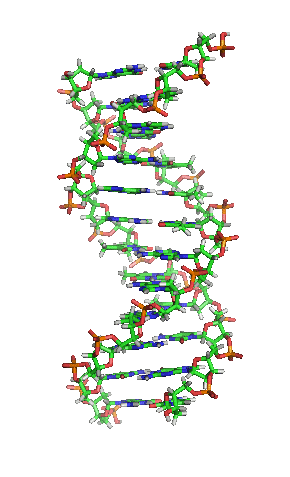Over the last month or so, there’s been a rising crescendo of concern among MS patients about the possible link between the newly approved oral MS drug Tecfidera (formally known as BG 12) and the deadly brain infection PML (Progressive Multifocal Leukoencephalopathy). I’ve received many anxious emails on the subject, and Internet MS forums and Facebook pages are rife with alarm over the perceived recent spate of bad Tecfidera news.
As long-time readers of this blog know, I’m not a big fan of Big Pharma, to say the least. In fact, I hold them in regard only slightly higher than the New York Yankees, who I am convinced are the essence of evil incarnate on earth. But I am also not a big fan of fear mongering, and when reviewed objectively, the facts behind the alleged link between Tecfidera and PML simply don’t warrant the level of anxiety recent reports have fomented. In fact, it seems that rivalries in the Big Pharma sandbox may be playing a role in all the hyperbole, but more on that later.
As most MSer are aware, PML is a brain infection that most often occurs in patients experiencing severe immunosuppression, such as those suffering from HIV/AIDS. In the context of MS, the infection is most closely linked to the drug Tysabri, whose mechanism of action often reduces immune system surveillance of the central nervous system quite drastically, opening up the possibility of opportunistic infection by the JC virus, which causes PML. Of course, it is this same mechanism of action that makes Tysabri so effective (the latest figures indicate that Tysabri therapy results in an 81% reduction in relapses, a 64% reduction in disease progression, and one in three RRMS patients appear to be free of disease activity for a prolonged period of time – click here for an exhaustive breakdown of Tysabri, its effectiveness, and PML). Despite Tysabri’s efficacy, PML is a real concern for those taking it, as 347 Tysabri patients have contracted the potentially deadly infection (approximately 120,000 patients are currently taking the drug).
Recently, it was revealed that four cases of PML occurred in German patients taking the psoriasis drug Fumaderm, from which Tecfidera was derived. It’s important to note that although the two drugs are similar, they are not identical. Fumaderm is a compound of dimethyl fumarate and three other related chemicals. Tecfidera is made only of dimethyl fumarate. Fumaderm has been used to treat psoriasis in Germany and some other European countries for about 20 years, with much success (click here), and is generally considered to have a benign side effect profile.
Both Tecfidera and Fumaderm do have immunosuppressive properties. In Tecfidera’s phase 3 DEFINE trial, it was found that the drug reduced lymphocyte counts in treated patients by about 28%. Lymphocytes are immune system cells whose mission it is to combat infection. These same cells are implicated in the MS disease process, and it is this depressive effect on lymphocytes that could well account for Tecfidera’s abity to fight the symptoms of MS. However, 4% of trial subjects (1 in 25) experienced a more severe form of lymphopenia (the medical name for a reduction in lymphocyte counts) which could make them vulnerable to opportunistic infections, requiring them to cease taking the drug. Recovery of lymphocyte counts after cessation of Tecfidera should be quite robust, based on years of experience with Fumaderm. (Click here for the entire DEFINE trial report)
A look at the four Fumaderm PML cases is quite revealing (click here.-site requires free membership, well worth it). In one case, the patient was not actually taking Fumaderm, but a version of the drug made by a compounding pharmacy which included a chemical not found in Fumaderm, which could have resulted in a formulation more potent or otherwise problematic than the factory produced drug. Another patient had sarcoidosis, a potentially deadly autoimmune disease, and had previously been treated with powerful immunosuppressive drugs. A third Fumaderm PML patient had cancer, and had been treated with Efalizumab, a drug in the same family as Tysabri that has a known risk of PML.
Two of the Fumaderm PML patients had severely depressed lymphocyte counts for two and five years respectively before developing PML. In Germany, the prescribing guidelines for Fumaderm require that patients get blood tests done to check cell counts every month for the first six months they are on the drug, and then every two months thereafter to check for depleted lymphocyte counts. If patients are found to have significant lymphopenia, the guidelines call for dosages to be adjusted or the drug stopped altogether. Apparently, this regimen was not followed in these two cases, as the patients’ lymphopenia was somehow allowed to persist until they developed PML. It’s quite likely that had the lymphopenia been addressed far earlier, neither patient would have contracted PML.
So, what should concerned patients take away from all of this? Tecfidera does depress white blood cell counts, and this effect quite likely plays a large role in its therapeutic value. However, 4% of treated patients can be expected to experience a more severe drop in lymphocyte counts, which could open them up to opportunistic infections like PML if left untreated for an extended period of time. That’s the bad news. The good news is that this drop in cell counts is easily detected by standard blood tests. Once such a decrease is detected, the drug can be stopped and any potential danger averted.
For reasons that I can’t explain, the FDA guidelines for Tecfidera only require blood tests done before treatment is initiated and then once yearly for the duration of treatment. Based on the Tecfidera trial data, as well as the experience gathered from the 20 year history of Fumaderm use in Europe, the requirement of just one blood test a year seems misguided. I’m currently waiting for my insurance company to give me the okay to start Tecfidera, and my neurologist is requiring blood tests every other month for all of his Tecfidera patients. As noted above, two of the Fumaderm PML patients had severely depressed lymphocyte counts for two and five years, so blood testing every other month should provide more than ample opportunity to catch any potential problems well before they become very real concerns.
I am by no means a doctor, just a well educated patient, but I would strongly advise all patients starting Tecfidera to insist that the neuro’s test their blood for lymphocyte counts at least every other month. Doing so should largely eliminate any chance of PML and set many a mind at ease. Despite its similarities to its cousin Fumaderm, Tecfidera is a brand-new drug, and although all signs point to it being a very safe medicine, I think it prudent to err on the side of caution. If your neuro resists, print out the DEFINE trial results and show him/her the data on lymphopenia, which can be found on the ninth page of the study. I always urge patients to educate themselves and to self advocate. Here’s the perfect opportunity to do both.
In short, all of the recent concerns about Tecfidera and PML appear to be hugely overblown. To put things in context, Tysabri has seen 347 cases of PML in approximately 260,000 patient hours of drug exposure. Fumaderm has seen four cases of PML in approximately 180,000 hours of drug exposure. It’s been noted that Fumaderm is not generally given as a long-term therapy. However, at least one study researched psoriasis patients who have taken the drug for up to 14 years, with no apparent added risk associated with long-term use (click here). Based on the DEFINE trial results, the large majority of Tecfidera patients, 96%, should experience no problems whatsoever with lymphopenia. Regular blood testing should ensure that patients who do experience clinically significant drops in lymphocyte counts avoid any potential problems.
The fact that Tecfidera is an oral drug that appears to be almost twice as effective as the injectable CRAB drugs, and may have neuroprotective properties to boot, should make it a very valuable weapon in the arsenal against MS. Like all of the current MS drugs, it is not a cure, but it will hopefully bring many patients some significant relief from this terrible disease. Using all of my self-control, I'll refrain from going on my usual rant about how the focus of pharmaceutically funded MS research on immune system suppression and modulation does absolutely nothing whatsoever in the effort to find a cure for the disease, but it doesn't. And that sucks. There, I said it. I couldn't help myself.
Oh, I almost forgot. About those shenanigans in the Big Pharma sandbox: it appears that the reports of potential problems with Tecfidera were first brought to the attention of the FDA and the general public by Teva Pharmaceuticals, makers of Copaxone, one of the CRAB drugs that are currently considered the first-line drugs given to new MS patients (click here). Guess which MS drugs are most threatened by the potential success of Tecfidera? Yup, the CRABs, of which Copaxone is currently the most prescribed. With Copaxone sales of $4 billion (yes, billion) in 2012, Teva has about 4 billion reasons to try to delay Tecfidera’s entry into the market, or to stir up concern among the drug’s potential consumers. Not that I would ever accuse any Big Pharma players of partaking in such underhanded behavior. Gee, I sure hope the Yankees win the World Series…
Not.
(For a comprehensive overview of the how's and why's of Tecfidera, please see my previous post on the topic, by clicking here)
Oh, I almost forgot. About those shenanigans in the Big Pharma sandbox: it appears that the reports of potential problems with Tecfidera were first brought to the attention of the FDA and the general public by Teva Pharmaceuticals, makers of Copaxone, one of the CRAB drugs that are currently considered the first-line drugs given to new MS patients (click here). Guess which MS drugs are most threatened by the potential success of Tecfidera? Yup, the CRABs, of which Copaxone is currently the most prescribed. With Copaxone sales of $4 billion (yes, billion) in 2012, Teva has about 4 billion reasons to try to delay Tecfidera’s entry into the market, or to stir up concern among the drug’s potential consumers. Not that I would ever accuse any Big Pharma players of partaking in such underhanded behavior. Gee, I sure hope the Yankees win the World Series…
Not.
(For a comprehensive overview of the how's and why's of Tecfidera, please see my previous post on the topic, by clicking here)



